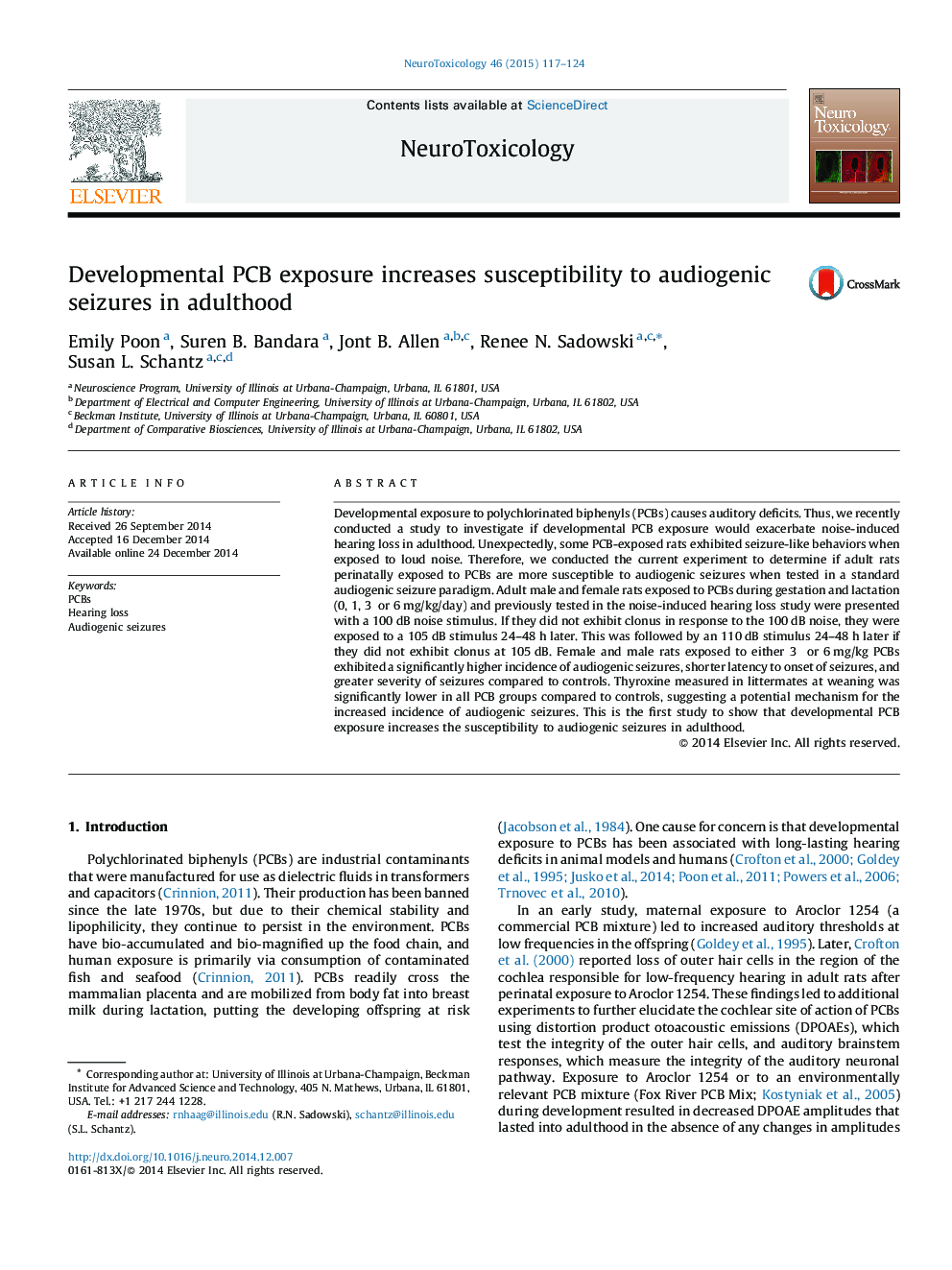| Article ID | Journal | Published Year | Pages | File Type |
|---|---|---|---|---|
| 2589608 | NeuroToxicology | 2015 | 8 Pages |
•Dams were exposed to 0, 1, 3, or 6 mg/kg/day PCBs during gestation and lactation.•Offspring were tested for audiogenic seizure susceptibility in adulthood.•Exposure to 3 and 6 mg/kg PCBs increased the incidence and severity of seizures.•PCB-treated groups had lower levels of thyroxine at weaning compared to controls.
Developmental exposure to polychlorinated biphenyls (PCBs) causes auditory deficits. Thus, we recently conducted a study to investigate if developmental PCB exposure would exacerbate noise-induced hearing loss in adulthood. Unexpectedly, some PCB-exposed rats exhibited seizure-like behaviors when exposed to loud noise. Therefore, we conducted the current experiment to determine if adult rats perinatally exposed to PCBs are more susceptible to audiogenic seizures when tested in a standard audiogenic seizure paradigm. Adult male and female rats exposed to PCBs during gestation and lactation (0, 1, 3 or 6 mg/kg/day) and previously tested in the noise-induced hearing loss study were presented with a 100 dB noise stimulus. If they did not exhibit clonus in response to the 100 dB noise, they were exposed to a 105 dB stimulus 24–48 h later. This was followed by an 110 dB stimulus 24–48 h later if they did not exhibit clonus at 105 dB. Female and male rats exposed to either 3 or 6 mg/kg PCBs exhibited a significantly higher incidence of audiogenic seizures, shorter latency to onset of seizures, and greater severity of seizures compared to controls. Thyroxine measured in littermates at weaning was significantly lower in all PCB groups compared to controls, suggesting a potential mechanism for the increased incidence of audiogenic seizures. This is the first study to show that developmental PCB exposure increases the susceptibility to audiogenic seizures in adulthood.
